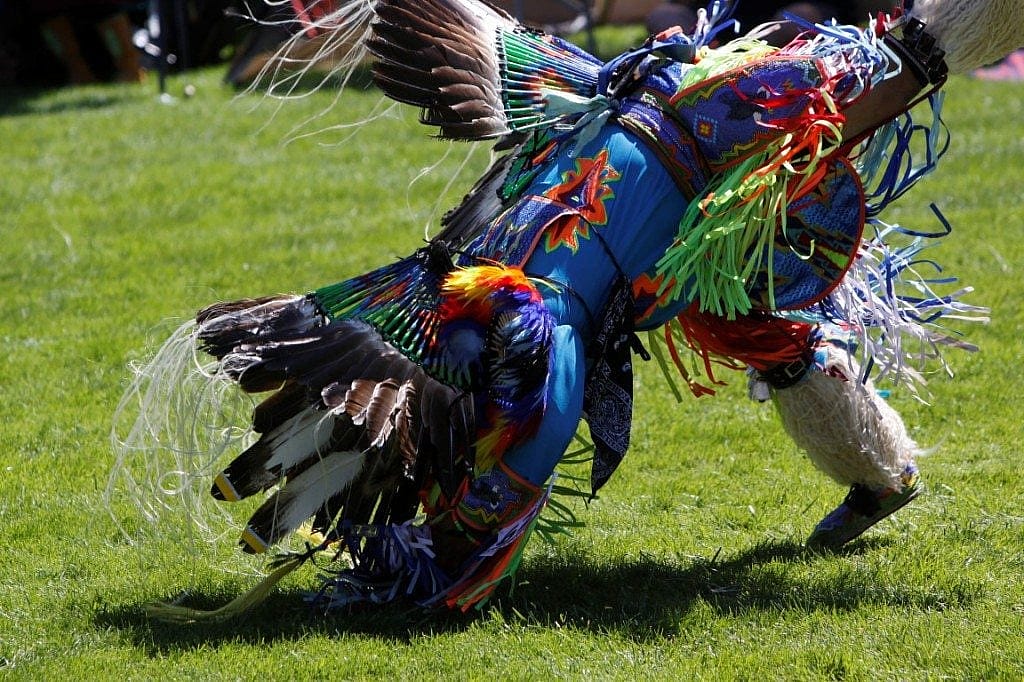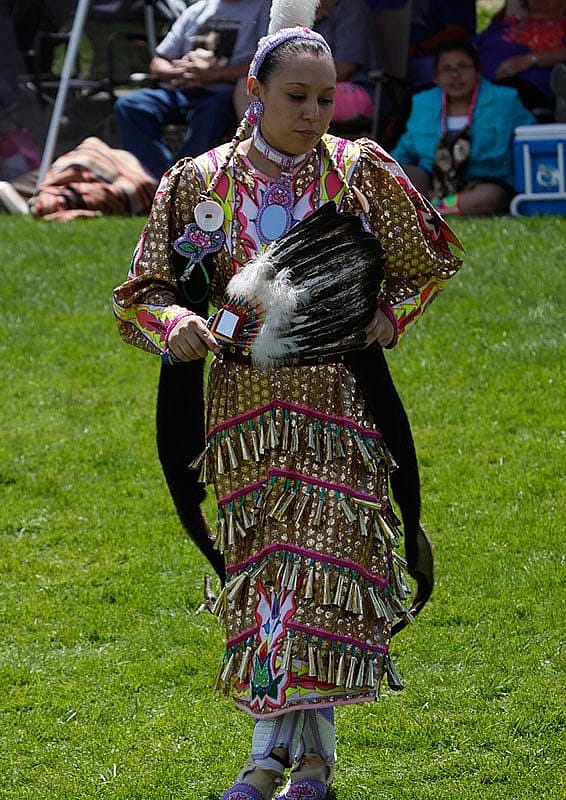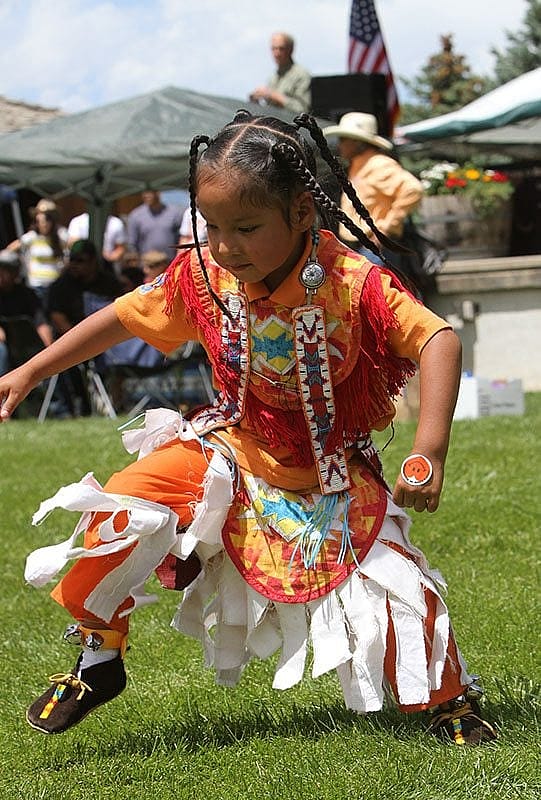Powwow Dances

Powwow Dances
Each June, the Buffalo Bill Center of the West hosts its annual Powwow with more than 200 dancers, 9 drums, and 28 tribes represented. Dancers, drum groups, and artists from Northern Plains tribes gather to celebrate vibrant cultural traditions. This celebration reflects both historical and contemporary influences in both dance and music. Powwow is a competition in which men, women, teens, and children participate within their designated category, which varies in technique, speed of the drums and song, and clothing and regalia. While each participant has a unique style, dancers must keep up with the rhythm of the drums. If a dancer’s feet are off beat, a judge can disqualify the dancer.
Men’s Traditional Dance
The Men’s Traditional Dance and associated regalia reflects the dances of warrior societies during the 19th century. The dance tells stories of hunting, tracking, fighting, and imitates the courtship dances of prairie birds. The men’s heads and upper bodies play out the story line. Photo by: Ken Blackbird.
Men’s Fancy Dance
The Men’s Fancy Dance is a fast and athletic adaptation of the basic steps and regalia of the Men’s Traditional dance. The colorful regalia includes beadwork, feathers, ribbons, and an additional bustle worn at the back of the neck. Photo by: Ken Blackbird.
Men’s Grass Dance
Grass Dancers shake their shoulders, sway their torsos, and dart to change direction. Their shirt and pants are heavily fringed with ribbon, yarn, or cloth. These adornments and movements mimic prairie grass swaying in the wind. Photo by Ken Blackbird.
Women’s Traditional Dance
The Women’s Traditional dance originates from a time when women stood outside the circle or arena and kept time with their feet. During this dance, women step forward to the beat of the drum and gesture gracefully with feathered fans. Dancers wear long hide or cloth dresses, often with heavy fringe and elaborate beadwork. Photo by Ken Blackbird.
Women’s Fancy Shawl Dance
Fancy Shawl dancers appear to float around the arena as their shawls are outstretched like beautiful wings. Women create this illusion by dancing on their toes, kicking high and twirling into the air. Girls and young women typically compete in this strenuous dance. The shawl, and its associated dance style, is an adaptation to the blankets originally worn or carried by women during social or ceremonial dances. Photo by Ken Blackbird.
Women’s Jingle Dress Dance
The Women’s Jingle Dress Dance has no set choreography. Dancers may incorporate rocking, stepping, and intricate footwork to make the jingles on their dress chime to the beat of the drum. The dresses’ jingles are rows of triangular metal cones sewn to elaborately decorated cloth dresses. Photo by Ken Blackbird.
Tiny Tots Dance
The Tiny Tots category includes young children, ages 6 and younger, who are just learning to dance. Their participation helps to encourage younger generations to embrace the powwow tradition. Photo by Ken Blackbird.
Social Dances
Social dances, such as intertribal and round dances, are also an important part of a powwow. They include all dance categories, ages, and genders. The Emcee will also invite powwow visitors to dance in the arena.
Music: The Drums
The drum refers to both the instrument and the group singing and playing the drum. Some songs are traditional and passed down through history. Other songs are contemporary and reflect current interests and artistic interpretations. Songs include traditional tribal languages, and many include vocables (rhythmically sung syllables) such as “hey,” “yah,” or “lay.” Photo by Ken Blackbird.
Powwow History
Beginning in 1883, the United States Government banned religious practices and other traditions, including dancing and celebration, among all Native people through the Code of Indian Offenses. Cultural and religious traditions survived this ban even though they had to go “underground.” (Crow Fair, early 1930s. P.304.054)
The Indian Reorganization Act of 1934 restored some freedoms, and Native Americans could once again gather, and hold some ceremonies. Powwows gained further prominence in the 1950s and 1960s, throughout the Plains region when Sioux, Crow, and Blackfeet tribes began to sponsor intertribal gatherings. Today’s powwows are a combination of social and ceremonial functions. (Crow Fair early 1930s. P.304.075)
Although the warrior societies and early Plains homecoming powwows of the past were primarily the domain of male dancers, contemporary powwows are open to everyone. (Crow Fair early 1930s. P.304.086)
To learn more about powwows we recommend the following book:
Native American Dance: Ceremonies and Social Traditions by Charlotte Heth, 1992. Smithsonian Institution with Starwood Publishing, Washington D.C.










